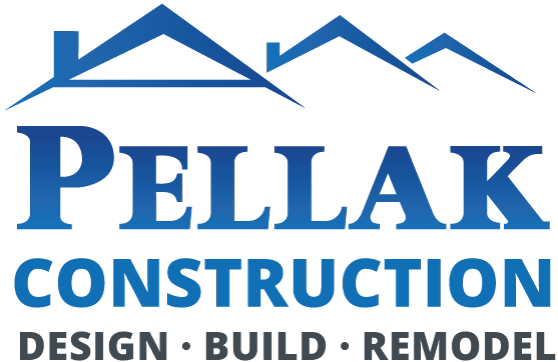Ceramic Tile Vs Wood Vs Laminate Flooring (In Kitchen) In Springfield, PA
Choosing the right flooring for your kitchen in Springfield, PA can be a tough decision. Ceramic tiles, wood, and laminate each offer unique benefits and challenges.
Our guide breaks down cost, performance, and maintenance to help you make an informed choice for your home.
Keep reading to discover the perfect kitchen floor!
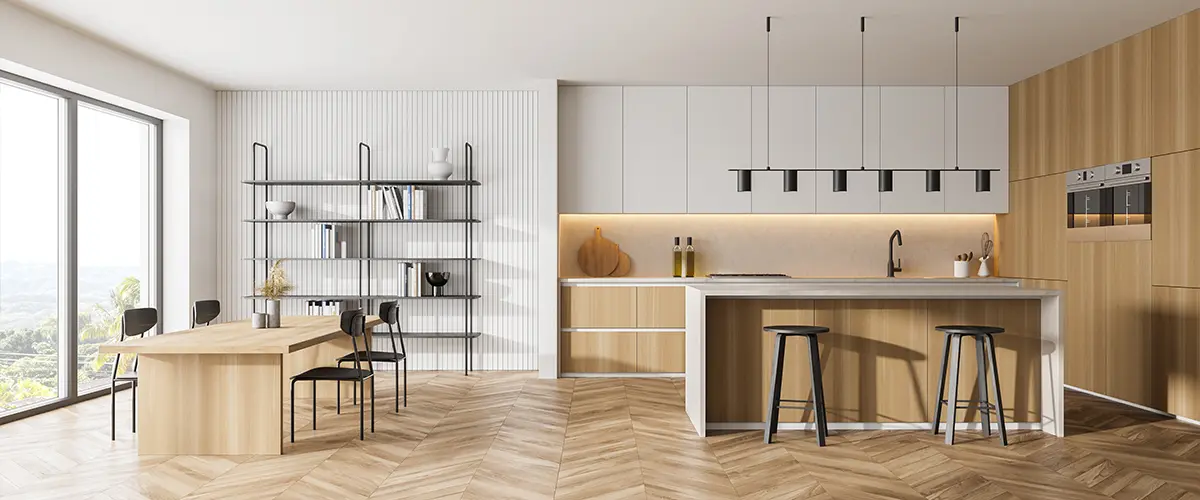
Key Takeaways
- Laminate flooring is the most budget-friendly option for kitchens in Springfield, PA, costing less than ceramic tile and wood. It's also DIY-friendly and easy to maintain.
- Ceramic tile floors are water - resistant, durable, and can last over 50 years but require professional installation which adds to the cost. Regular sealing is needed to prevent stains and damage.
- Wood floors add warmth and increase a home's resale value but are vulnerable to scratches and water damage. They may need refinishing every few years.
- When picking kitchen flooring, consider durability against foot traffic, moisture resistance for spills or humidity changes, maintenance needs like cleaning or repairs, comfort underfoot, appearance preferences such as style or color options from top brands like Shaw Floors or Armstrong Flooring.
- Homeowners should match their choice of kitchen flooring with their long - term goals including costs of materials plus installation fees versus durability over time to get value for money spent.
Cost Comparison
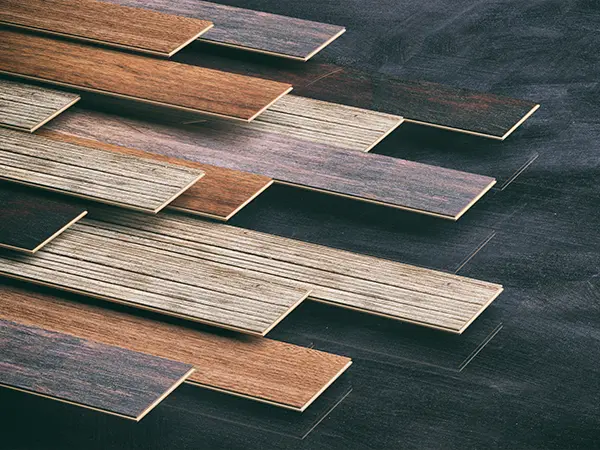
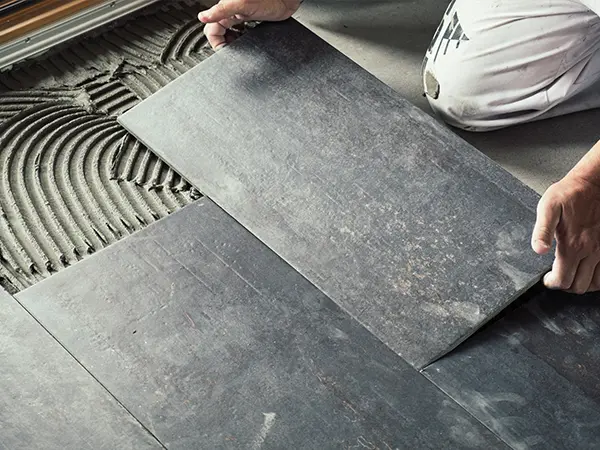
Laminate flooring vs tile flooring
| Feature | Laminate Flooring | Ceramic Tile Flooring |
|---|---|---|
| Material | Composite wood | Clay product |
| Installation | DIY-friendly, floating floor system | Requires professional installation |
| Water Resistance | Moderate | High |
| Cost | Generally less expensive | Varies, but can be more costly |
| Maintenance | Easy to clean, not as durable as tile | Easy to clean, very durable |
| Warmth and Comfort | Warmer and softer underfoot | Cooler and harder surface |
| Aesthetic | Wide range of styles | Natural look, wide range of designse |
| Repair | More challenging to repair | Easier to replace individual tiles |
Tile flooring cost
Tile flooring costs can vary widely, depending on the type of tile you choose. Porcelain tiles often cost between $5 and $10 per square foot for materials alone, while high-end options like natural stone can go much higher.
Tile installation adds to the expense, with labor rates ranging from $4 to $14 per square foot. This means putting in new floors made from porcelain tile might set you back quite a bit when considering both material and installation costs.
Before you install tile, also think about floor prep work that could increase your total price. Some kitchens may need old flooring removed or the subfloor reinforced which adds extra fees.
Keep in mind, certain types of tile require periodic resealing which is an additional maintenance cost not present with other flooring types like laminate or solid hardwood.
Laminate flooring cost
Laminate flooring is a budget-friendly option for kitchens. It often costs less per square foot than tile or hardwood floors. The price can depend on the thickness and design, but it’s still more affordable than natural wood.
Laminate also saves you money because you can install it yourself without specialized tools. New laminates come with a wear layer that makes them durable for high traffic areas in your home.
The cost varies from basic to luxury laminate wood flooring options. Basic versions might be as low as $1 per square foot, while better quality ones hover around $5 per square foot before installation.
Keep in mind, picking the right underlayment is crucial; it will affect both comfort and noise reduction but adds to the overall cost. With laminate floors, upkeep expenses are minimal — just use a damp mop for cleaning, no need for waxes or polishes.
Cost effectiveness
When comparing the cost effectiveness of laminate and tile flooring, it’s essential to consider both initial installation and long-term maintenance expenses.
While laminate flooring tends to be more budget-friendly upfront, tile can offer greater durability over time, potentially reducing replacement and repair costs in the future.
Homeowners in Springfield, PA should weigh the initial investment against the potential for longer-lasting performance when deciding between these options.
Considering factors like lifespan, durability, and maintenance needs is crucial for homeowners looking to make a cost-effective choice that aligns with their budget and long-term goals.
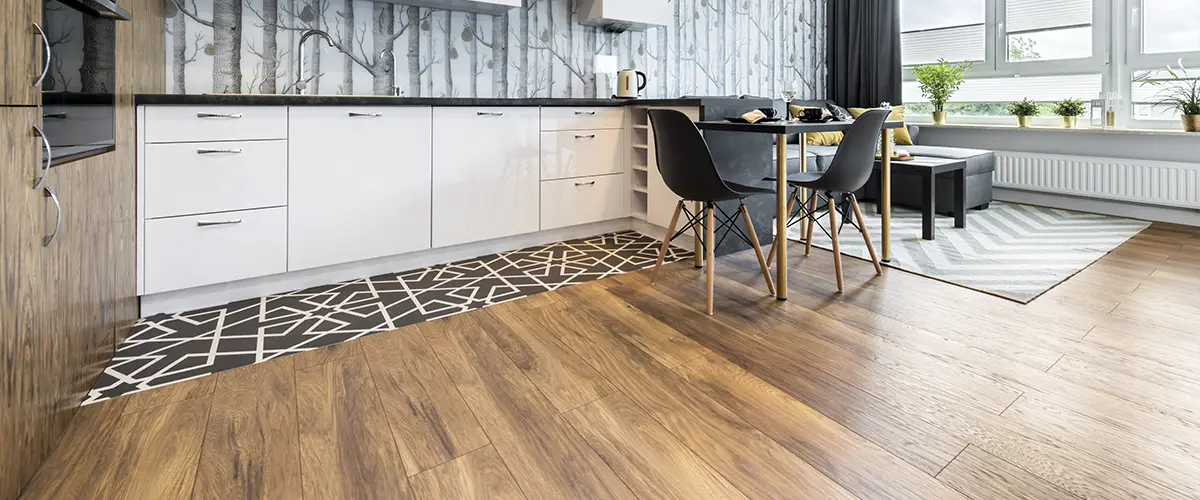
Performance and Maintenance
When it comes to performance and maintenance, durability, lifespan, and ease of maintenance are key factors to consider when choosing the right flooring for your kitchen.
Learn more about how each type of flooring measures up in these areas by reading on.
- Durability
Ceramic tile flooring boasts exceptional durability, able to withstand heavy foot traffic and resist scratches and dents. Wood flooring, while appealing, is susceptible to water damage and can easily scratch or dent.
Laminate flooring offers good durability with its scratch-resistant top layer but may not hold up as well against moisture over time.
In terms of lifespan, ceramic tile can last for decades with proper care, while wood floors may require refinishing every few years to maintain their appearance.
Laminate flooring holds up well over time if maintained properly but may need replacing sooner than ceramic tiles due to wear and tear.
- Lifespan
Laminate flooring typically lasts around 15-25 years, while ceramic tile usually endures for over 50 years. Wood floors generally have a lifespan of 20-100 years depending on the type and maintenance.
Durability is essential in high traffic areas like kitchens, hence knowing the expected lifespan of your flooring can aid long-term decision-making regarding replacement or repairs when needed.
Maintaining the flooring properly through regular cleaning and addressing any damage promptly can significantly extend its lifespan.
Understanding the longevity of each type of flooring helps homeowners make informed choices about durability and cost-effectiveness over time.
- Maintenance
- Regular sweeping and mopping required for both laminate and ceramic tile floors.
- Avoid using harsh cleaning products to sustain the quality of the flooring.
- For laminate flooring, using a damp cloth or specific laminate floor cleaner is recommended, while for ceramic tiles, consider using a pH-neutral cleaner.
- Inspect grout lines in ceramic tiles and repair if damaged to prevent moisture seepage underneath the tiles.
- Keep an eye on any signs of wear and tear such as scratches or dents on laminate flooring and replace damaged planks promptly to maintain the appearance.
- Apply sealant to tile floors regularly for protection against water damage and staining.
- Follow manufacturer guidelines for maintenance to preserve the warranty integrity.
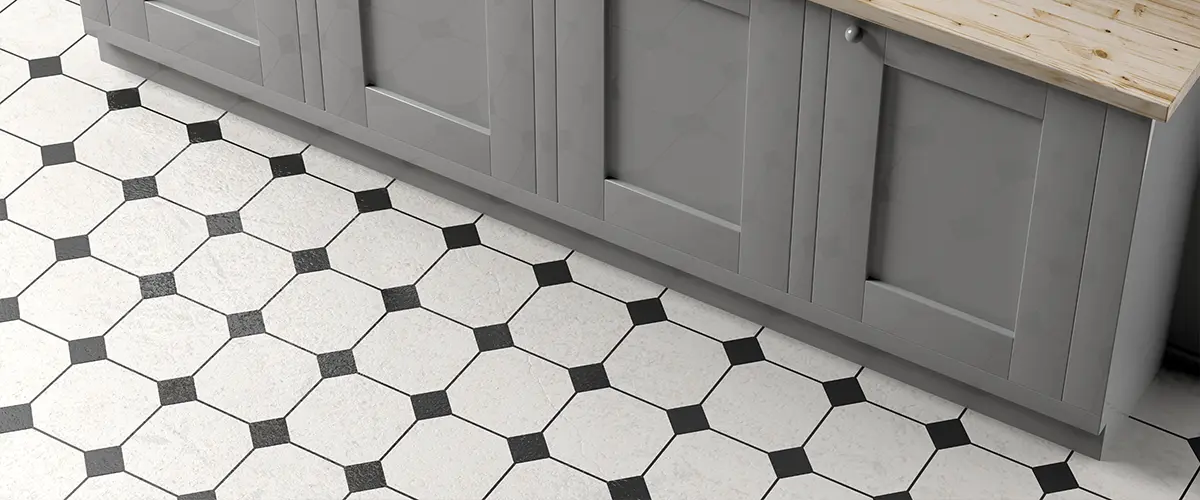
Choosing the Right Flooring for Your Kitchen
When choosing the right flooring for your kitchen, consider the appearance and comfort, water and heat resistance, as well as resale value.
It’s important to also look into top brands to ensure you’re making an informed decision for your home.
- Appearance and Comfort
When considering the appearance and comfort of your kitchen flooring, ceramic tile offers a timeless and elegant look. Its smooth surface is easy to clean, making it suitable for homeowners seeking a low-maintenance option.
Wood flooring provides warmth and natural charm, creating a cozy atmosphere in the kitchen. On the other hand, laminate flooring mimics the appearance of hardwood but is more budget-friendly, offering both aesthetic appeal and comfort underfoot.
The embossed texture of laminate provides slip resistance while maintaining its visual appeal.
- Water, Heat, and Environment
Consider the impact of moisture and temperature fluctuations on your flooring choice. Ceramic tile is water-resistant and handles heat well, but wood or laminate may not withstand moisture as effectively.
Laminate flooring has a protective layer that makes it more resistant to moisture compared to real wood. When selecting a floor, prioritize materials with low volatile organic compounds (VOCs) for better indoor air quality.
Environmental factors can influence the lifespan and appearance of your kitchen flooring. For instance, hardwood floors can be sensitive to temperature changes and water exposure, while ceramic tiles are durable in high-moisture environments.
- Resale Value
When it comes to resale value, flooring choice matters. Ceramic tiles and wood floors are considered more desirable by homebuyers in Springfield, PA.
Hardwood floors can significantly increase the appeal and value of a home, while ceramic tile also adds an upscale look.
Laminate flooring may not have the same impact on the resale value as hardwood or ceramic tile due to its perceived lower quality and durability compared to natural materials like wood and ceramic.
Additionally, investing in durable and visually appealing flooring such as wood or ceramic tile can help increase your home’s overall market value.
Homebuyers often prefer these options over laminate when considering a property purchase in Springfield, PA due to their long-term durability and elegant appearance which can contribute to a higher selling price for your home.
Top Brands
Choosing the right flooring for your kitchen can be overwhelming, especially considering the abundance of options available. However, some top brands stand out in terms of quality and reliability.
Consider the following reputable brands when making your decision:
- Shaw Floors
Known for its wide range of styles, colors, and textures, Shaw Floors offer durable laminate and tile options that are both stylish and functional.
- Armstrong Flooring
With a strong reputation for quality and innovation, Armstrong‘s laminate flooring is designed to mimic the look of natural wood while being more affordable and easier to maintain.
- Mohawk Industries
Mohawk Industries offers a variety of ceramic and porcelain tile options known for their durability, low maintenance, and timeless appeal.
- Pergo
Pergo is renowned for its high-quality laminate flooring designed to resist scratches, stains, and wear while providing a realistic wood appearance.
- Daltile
Specializing in ceramic tile, Daltile offers a vast selection of sizes, shapes, patterns, and textures to suit any kitchen style while maintaining resilience against daily wear and tear.
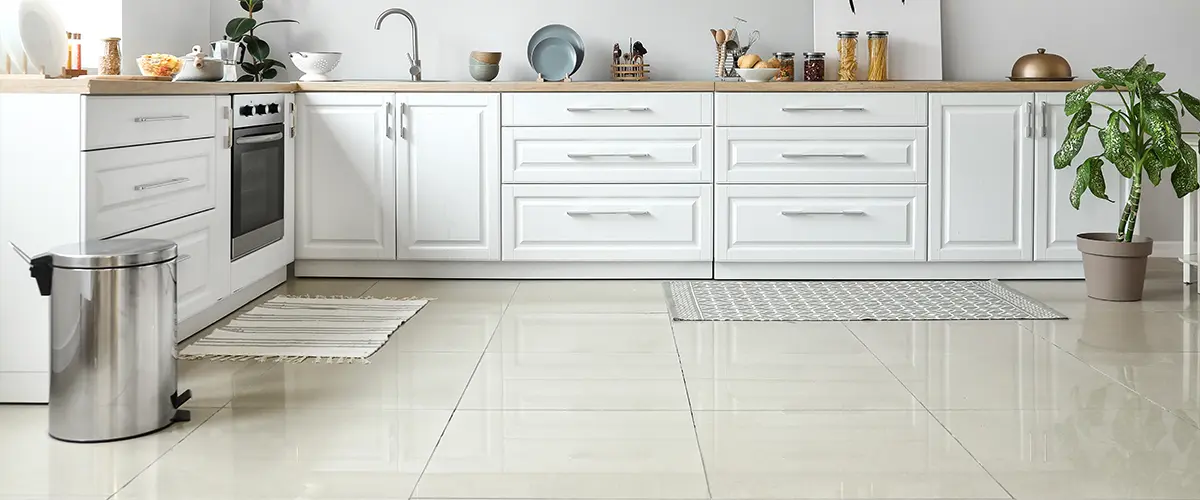
FAQs
Rely On Our Experts At Pellak Construction For Your Flooring Needs
Place your confidence in Pellak Construction for your flooring needs. Our skilled experts ensure precision and durability. Contact us at (610) 543-2479 today to transform your space with unparalleled craftsmanship.
